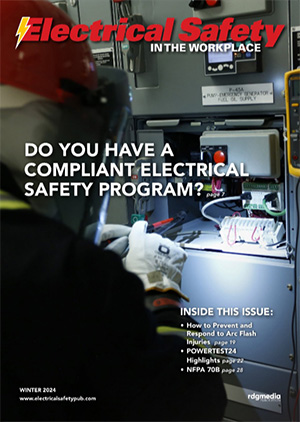Dealing with ANSI Z359 Standards Doesn’t Have to Be Confusing
“Falls are among the most common causes of work-related injuries and death,” says the U.S. government’s Occupational Safety and Health Administration (OSHA).
Fortunately, fall arrest devices and worker safety protection programs are in place to help keep workers from harm.
One of the best protectors? Fall protection systems, which date back to the early 20th century when Rose Mfg. Co., owned by MSA The Safety Company since 1996, pioneered the manufacture and use of safety belts and lanyards.
Later, the company developed modern-day shock absorption, including what OSHA recognized as a “major innovation” in fall arrests – the full-body harness.
In addition to advances in fall protection gear through manufacturers like MSA, the American National Standards Institute (ANSI) voluntarily established fall arrest protection standards in the 1990s.
THE STANDARD
First published in 1992 as ANSI Z359.1, reaffirmed in 1999, and revised in 2007, the ANSI Z359.1 standard established requirements for “performance, design, marking, qualification, instruction, training, inspection, use, maintenance and removal from service” for non-construction occupation fall arrest systems including:
- Full-body harnesses
- Lanyards
- Connectors
- Energy absorbers
- Fall arresters
- Vertical lifelines
- Anchorage connectors
In short, ANSI Z359.1 used to be an all-encompassing product standard.
LABELING
In 2007, ANSI subcommittees embarked on a fundamental overhaul of the Z359.1 standard, detailing requirements by component instead of creating what could be essentially thought of as a “lump-sum” requirement.
In the 10 years since, ANSI Z359 has been completely revamped, creating individual standards from .2 through .18. Some ANSI Z359 standards are specific to products, others are procedural or managerial, yet all are designed for the safety and protection of the worker at height.
“If your company isn’t completely clear on the design, testing, and approval requirements for fall protection gear manufactured and sold as compliant with ANSI Z359 requirements,” says Rob Senko, MSA’s Industrial Segment Market Manager, “you could be making the wrong product selection or, worse, putting your workers at risk.”
TESTING
When it comes to fall protection, safety and program managers must find the best gear for the job and the worker.
More importantly, they need to make sure that gear is compliant with testing requirements and labeled to the latest ANSI requirements.
But with ever-changing OSHA requirements, a decade of ANSI changes, and plenty of blah-blah-gobbledygook-speak designed to cast doubt or discredit some testing and compliance programs, it can be downright baffling to keep up.
Here, Senko helps clear up the confusion:
- The .1 standard will now become the guidance document.
- As of Feb. 16, 2018, all new fall protection products manufactured shall be labeled to their respective standard.
- Already-in-service equipment labeled to the .1 standard can be used until it is removed from service.
- Steer clear of new products (other than anchorage connectors) labeled to the ANSI Z359.1 standard.
- Purchase PPE products from a PPE manufacturer with a demonstrated testing and compliance program.
“Remember that ANSI is a voluntary standard, yet when combined with a robust safety program, and innovative fall protection products tested in an ISO-accredited lab like ours,” says Senko, “you’re doing the right things to help keep your workers safe at height.”
Phone: 1-800-MSA-2222
www.msasafety.com
Share on Socials!
Klein® Tools Searches for “Head of the Class” Instructors
Orbit Industries, Inc. Announces it has joined the NECA San Diego Chapter
A Better Way to Operate: Improving the Performance of Synthetic Ropes for Conductor Line Stringing
Leaders in Electrical Safety
• Aramark
• Bowtie Engineering
• Enespro
• Ericson
• I-Gard Corporation
• IRISS
• KERMEL, INC.
• Lakeland Industries
• MELTRIC Corporation
• National Safety Apparel
• National Technology Transfer
• Oberon
• Saf-T-Gard
• SEAM Group
Subscribe!
Sign up to receive our industry publications for FREE!







